Bisotun is a famous complex based in Bisotun city of Kermanshah, containing many historical placese like statue of Hercules, Bisotun bridge, Safavid caravanserai, statue of Mithridates II, Farhad Tarash and etc. therefor it`s an important archaeological place of Iran.


Inscription and mountain carving of Darius is one of the relics in the complex which is a world heritage site and also there are many caves that proves human existence in this area through Paleolithic era.
Bisotun is a treasure of relics in Iran.
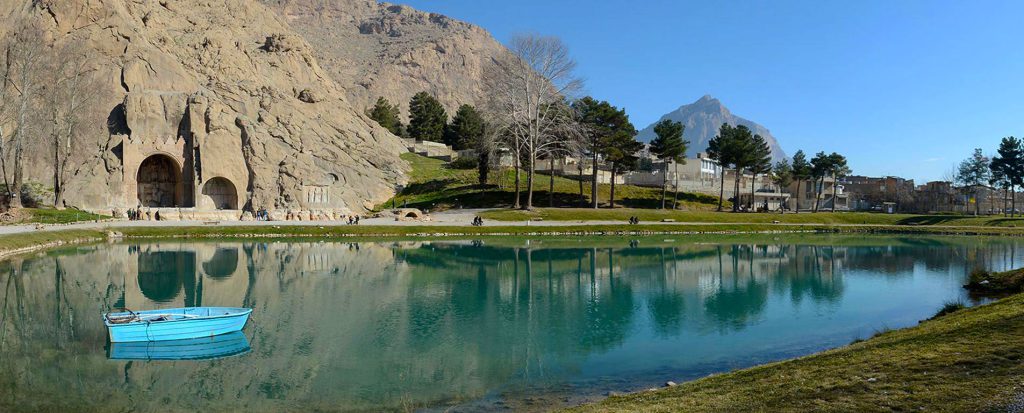
Bisotun complex was constructed on 1650 hectares and it has great historical and natural value and variety but it`s known internationally because of Darius cylinder which leads back to 520 BC.
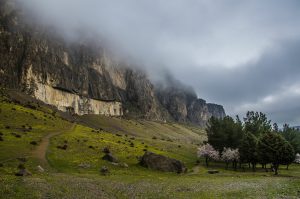
Bisotun mountain is more than 4000 feet high.
Bisotun used to be home to hunters during Paleolithic. They lived in southern caves through seasonal settlements.
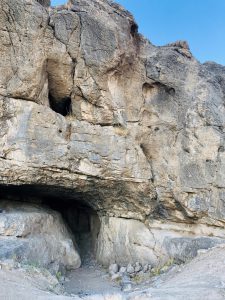
Hunters cave was the first one dug in 1328 by an American anthropologist in two weeks and thousands of middle Paleolithic tools were discovered. Through this digging, some animal bones leftovers were found like horses that were 40 to 70 thousand years old. Also, a forearm bone was found which may be related to a Neanderthal or new Paleolithic human.
Bisotun is known as Everest of world`s cliffs and highest wall of Iran.

It`s interesting that wall of Bisotun has about 5000 meters wide, it`s one of the most technical rock climbing walls around the world and world`s fifth highest wall.
Why Bisotun?
The word “Boqestan” is the origin of Bisotun which means place of gods and there`s a clue that it`s ancient name was “Bagastana”.
Bisotun Inscription
This monument is a description of victory of Darius I over Gaumata. It`s the most important work of art and monument of Achaemenias and the oldest script of Persian literature. Therefore, it`s one of the main historical documents in the world.
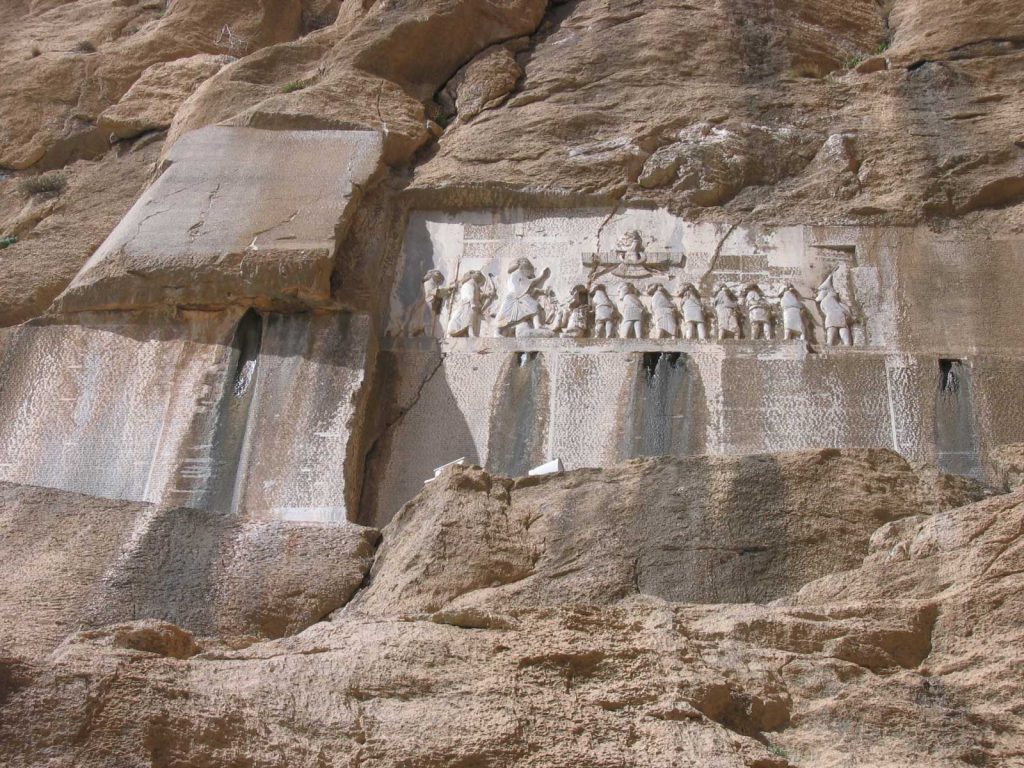
There`s a trace of stairs near inscription that shows masons had used them to access the cylinder and after finishing destroyed it to avoid any entrance to cylinder and inscription.
Bisotun inscription is 22 meters high and 8 meters wide and was carved in three languages including ancient Persian, Elamite and Babylonian written in cuneiform.

The text of this inscription is managed so that the writing near each person is related to the one.
First, it`s an introduction of Darius and his house :
I am king Darius, son of Hystaspes, an Achaemenid, king of kings and now I`m the king of Persia.My father was Hystaspes and his father was Arsames. Father of Arsames was Ariaramnes and his father was Teispes, Father of Teispes was Achaemenes. Therefore, we call ourselves Achaemenid.
From antiquity our dynasty has been aristocratic and from antiquity weve been royal. Eight of my dynasty were kings and I am the ninth. Weve been kings from two clans.
Statue of Hercules
This statue leads back to Seleucid-Parthian era. The sculpture was built in 153 B.C which was during Mithridates I reign and the late Seleucid empire.

Back then Hercules was one of the most popular gods so, many clay and stone sculptures of Hercules were made by the time. The most famous one in Iran is stone statue of Hercules which is located by the south-west main road of silk road.
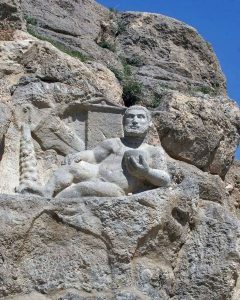
Theres a Greek inscription behind the statue and also pictures like an olive tree with a quiver and a bow held to it was carved. Next to the tree, theres a conic mace which is carved sharper.
Under body of Hercules, a lion could be seen which is attached to the mountain and its body is about 2 meters and its tail is 114 centimeters.
Bisotun palace
Ruined, unfinished Bisotun palace which faces Bisotun inscription belonged to khosrau II, Sassanid king.
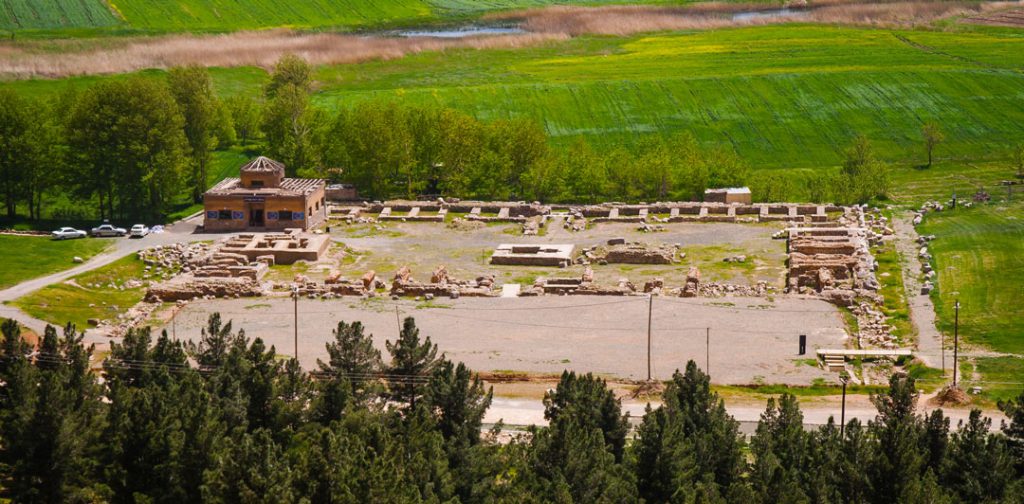
Under archelogy diggings since 1976, it`s been found out that only walls of the palace were built by the time and for unknown reasons it`s unfinished. Later, it was turned into a caravansary but an earthquake destroyed it. During the Qajar era, a village was constructed there.
Farhad Tarash
Farhad Tarash is a giant but unfinished carving, lying to west of Darius inscription. It`s on a wall with a height of 36 meters and it is also known as “Faray Tarash” or “Farhad`s throne”.
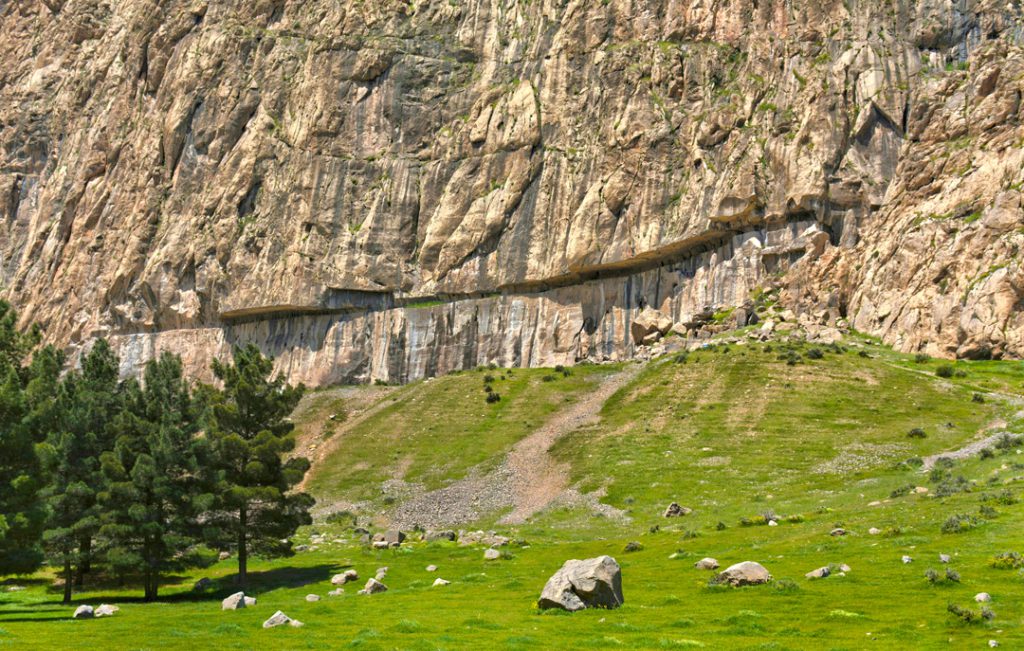
Farhad Tarash is special in Persian literature. Due to poems like Nizami Ganjavi`s, People relate this monument and Farhad-e-Kooh Kan (Farhad the mount digger) and say he did this for the love of Shirin.
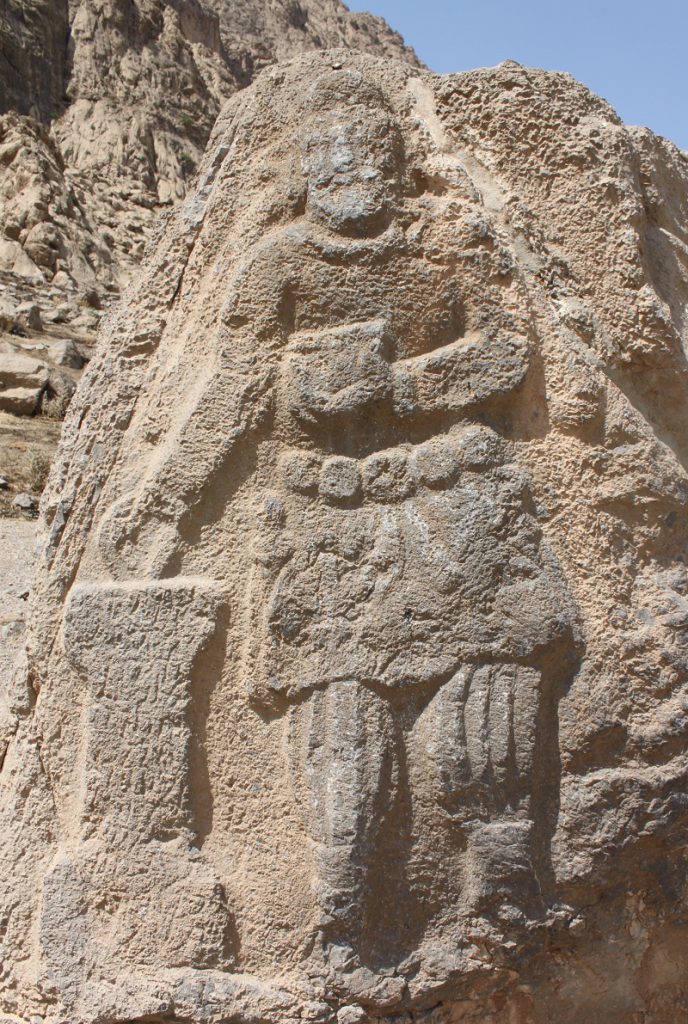
Sang Belash
Theres an irregular quadrilateral slab on the hillside of mount Bisotun. Its height is about 2.5 meters and on three sides, therere carvings.
On the top of it, theres a carving of Belash, Parthian king, including his face and wearing a belt, a necklace and a loose skirt. Theres an inscription on the fireplace that says :
This is the picture of king of the kings, Belash. Son of king of the kings, Belash. Grandson of…
The rest of the inscription is faded so it`s not clear which Belash the carving belongs to.
Bisotun mirage
Bisotun mirage is a spring and it`s water has made a small pond. A pond that has been one of the reasons of human residence in this area since Paleolithic. Also, caravans used to stay near Bisotun mirage, traveling from west of Iran to Mesopotamia.
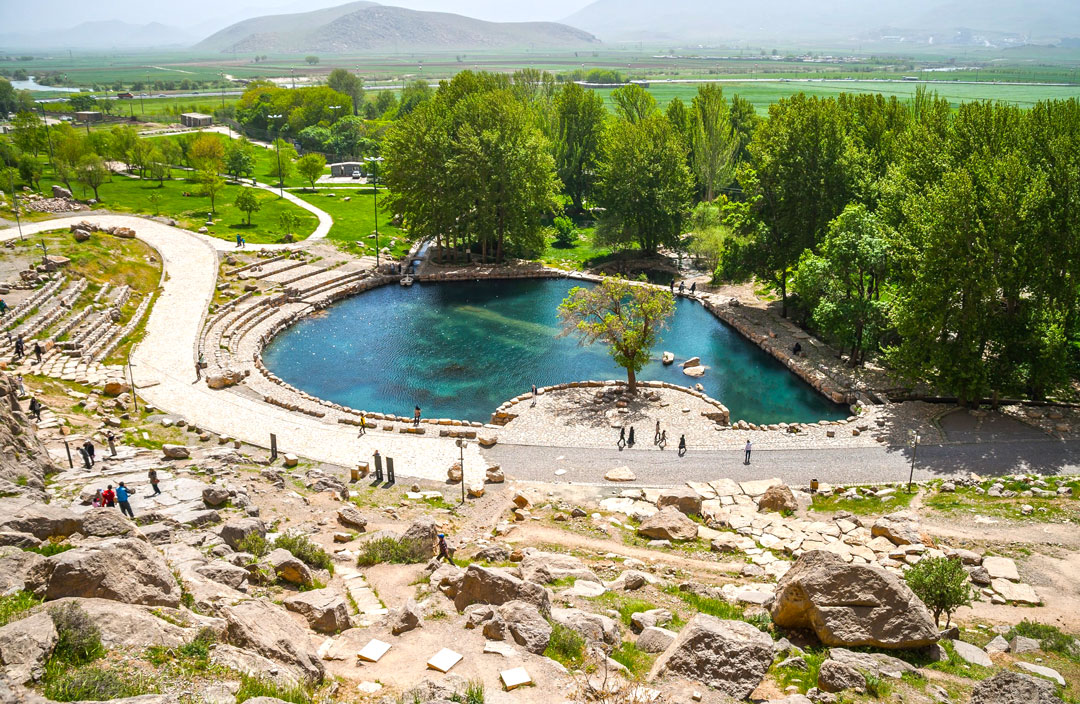
Great nature and relics around the mirage, made it one of the most beautiful mirages in Iran.
Median castle
The walls of the fort were built in dry stone pitching way and with small and big stones. Researchers attribute the construction of this castle to the the Medes. Beside that, the discovery of a bronze brooch dating back to the 8th century BC strengthens this theory.
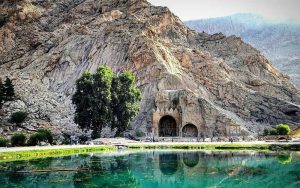
Archaeologists believe that the establishment of this building is related to the Darius inscription, and they believe that Gaumata and his allies were defeated by Darius in this place.
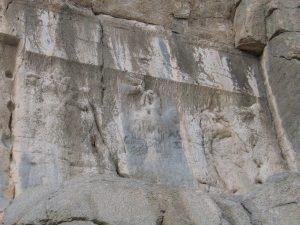
Petroglyph Goudarz
This petroglyph pictured the victory of Gotarzes II against Mithridates. Mithridates was a Parthian prince who grew up in the court of the Roman Empire, and Gotarzes ruled Iran between 38 and 51 AD. This petroglyph shows a not so clear picture of the battle scene.
Parthian Mithridatesstatue
The statue of Mithridates, one of the greatest Parthian kings, can be considered as one of the oldest relics from the Parthian ruling time, which has great historical value.
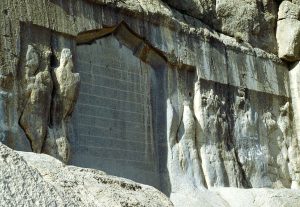
This work, which was probably carved between 123 and 110 BC, is located just below the inscription of Achaemenid Darius.
Party temple
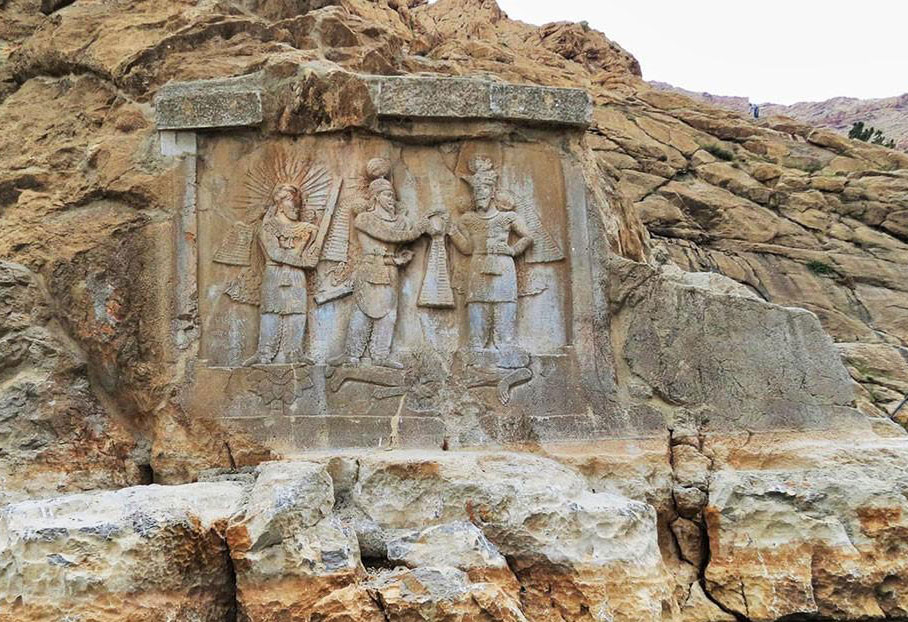
There is a historical monument in the north of Darius statue, which experts believe is a temple from the Parthian period. This place consists of two stone platforms that are connected to each other through a number of stone steps. A circular hole can be seen inside these platforms, which some people believe was used as a fire pit in religious ceremonies.
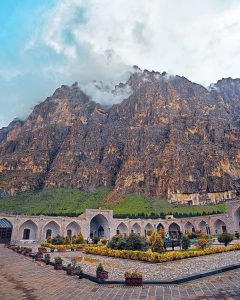
Shah Abbasi Caravansary of Bisotun
This caravanserai, which has an area of more than 6,000 square meters, was built in the style of Safavid era caravansery. The construction was probably started by the order of Shah Abbas I Safavid and according to the inscription that is on its transom, it was apparently finished by the efforts of Shaykh Ali Khan Zanganeh.
Shah Abbasi Caravansary has been converted into a traditional hotel.
The caravansary was restored during the time of Naser al-Din Shah and was used as a barn during the Pahlavi rule. After the Islamic revolution, it was under the control of the prisons administration for 17 years, until the cultural heritage organization took it back to restore the building at the end.
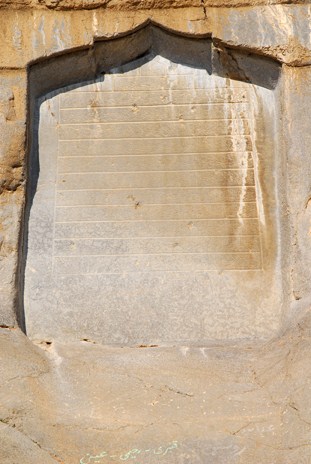
Shaykh Ali Khan inscription
Shaykh Ali Khan, who was the ruler of Kermanshah in the first place who did a lot of cilvil projects in this region, later became the chancellor of Shah Abbas II and then Shah Suleiman Safavid, and was really trusted that he earned the title of Etemad al-Saltaneh.(literally means trusted by the kingdom)
Shaykh Ali Khan’s inscription is his dedication letter, which was carved on the petroglyph of Mithridates II on the hillside of Bisotun Mountain which led to the damage of this historical monument of the Parthian period.
Sassanid Bridge

The Sassanid Bridge or Khosrow Bridge is 152.80 meters long and is located on the Gamasiab River, two kilometers away from Bisotun city. According to the masonry technique, stone surface cutting, sculptural signs and Khosrow Parviz’s interest in construction, we can conclude that this historical work belongs to the Sassanid period. According to some experts, this bridge was a part of the Sassanid dam.
Bisotun Bridge

Bisotun Bridge is located on the Dinoorab River and is known by many names, including Shah Abbasi Bridge, Safavid Bridge, Kohneh Bridge, Nader Abad Bridge and Dinoorab Bridge. This bridge is 144 meters long and since it was built in the late Sassanid period, it is attributed to Khosrow Parviz.

Bisotun Mountain Caves
The caves of Bisotun Mountain include Mar Kharel, Shekarchian (hunters), Mar Tarik, Mar Doder and Mar Aftab, which contain the oldest works of Bisotun Mountain from the Paleolithic period
The cave of Shekarchian : It is located right above the statue of Hercules and was probably a temporary shelter for hunters who used this place for butchering and hiding from wild animals.
Mar Kher : The oldest works discovered in this cave, such as thick stone blades and scrapers which are related to the Middle Paleolithic era; However, some works from other historical periods up to the Sassanid era have been found in this cave. These remains help archaeologists to study climatic changes, animal and plant diversity, and the culture of the region in different historical periods.
Mar Tarik : This cave has a view to a natural platform and its opening is located at a height of three meters on the mountain wall. This cave is about 80 square meters wide and 25 meters deep. It looks like a deep and narrow corridor.
Mar Aftab : This cave was used as a seasonal residence in the Paleolithic period. Some stone tools and a bone tool were also discovered from this cave.
Mar Doder : This cave, which is about one to three meters high, is considered the highest cave in Bisotun.
Access way
Bisotun is 30 kilometers away from northeastern of Kermanshah and next to the ancient road from Kermanshah to Hamedan. This historical area on the hillside of Bisotun mountain in Bisotun city shines like a gem.
Kermanshah province, Bisotun city, Bisotun historical area
View Larger Map

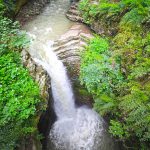
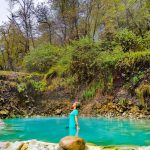

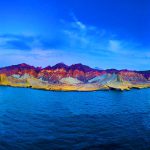
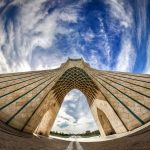

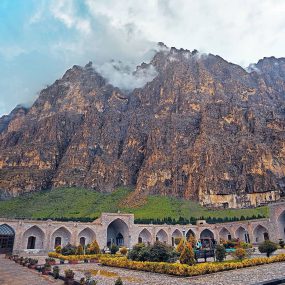

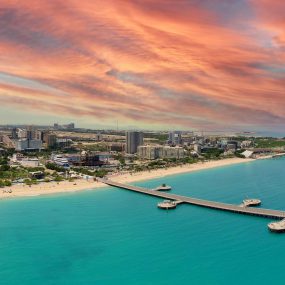
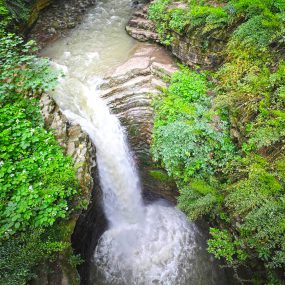







wonderful place
Yes , Come To iran